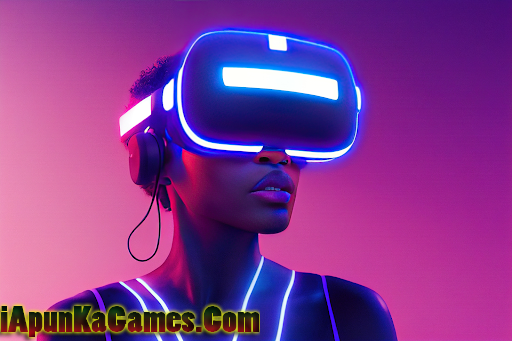In the intricate tapestry of technological evolution, the symbiotic rise of Virtual Reality (VR) and Augmented Reality (AR) emerges as a testament to the transformative power of immersive experiences. This exploration dives deep into the technical underpinnings, unraveling the complexities that drive the digital transformation within the realm of VR and AR gaming. As we dissect the intricate machinery, we invite you to embark on this journey of technological alchemy, where the fusion of hardware, software, and innovative methodologies reshapes the very landscape of digital interaction.
Hardware Architecture: The Pillars of Immersion
At the core of the VR and AR experience lies an intricate ballet of hardware components that converge to create a seamless illusion of alternate realities. VR hardware, epitomized by headsets such as Oculus Rift or HTC Vive, integrates a sophisticated ensemble of high-resolution displays, precise motion sensors, and positional tracking systems. These components work in unison, capturing even the subtlest of movements and translating them into immersive virtual environments.
On the AR front, devices like Microsoft’s HoloLens employ advanced optics, depth-sensing cameras, and spatial sensors to overlay digital information onto the user’s physical surroundings. The complexity lies not only in rendering digital elements but in real-time mapping and tracking of the environment, ensuring a coherent and interactive augmentation of reality.
Software Engineering: The Codified Essence of Immersion
The software realm is where the magic of VR and AR truly comes to life. Developers engage in a symphony of coding languages, harnessing the capabilities of powerful engines like Unity or Unreal. VR software not only renders visually stunning environments but also employs intricate algorithms for motion prediction, gaze tracking, and real-time physics simulations. The challenge lies in optimizing for low latency, ensuring a seamless transition between user inputs and the corresponding virtual responses.
AR software, on the other hand, is tasked with the demanding feat of spatial recognition and contextual augmentation. Technologies like Simultaneous Localization and Mapping (SLAM) play a pivotal role in dynamically mapping the user’s surroundings and anchoring digital content within that context. This demands a delicate balance between rendering fidelity and real-world integration, a technical ballet where precision is paramount.
Sensory Integration: Tracking Every Gesture and Gaze
The immersive quality of VR and AR hinges on the integration of sensors that meticulously track user movements and interactions. VR systems deploy an array of gyroscopes, accelerometers, and external sensors to capture head movements, ensuring a fluid and responsive virtual experience. Some advanced setups extend this tracking to the entire body, allowing users to physically navigate and interact within the virtual space.
In AR, depth-sensing cameras, infrared sensors, and LiDAR technology contribute to the creation of a spatial map, enabling devices to understand the physical environment. Gesture recognition technologies, whether camera-based or utilizing wearable devices, empower users to interact with augmented elements in an intuitive and natural manner. The challenge lies in creating a cohesive system where the digital and the physical seamlessly coexist.
Networking and Latency: The Backbone of Immersive Interaction
In the interconnected landscape of VR and AR, the role of networking infrastructure cannot be overstated. Seamless interaction in multiplayer VR environments demands low-latency communication between users and servers. The challenge lies not only in real-time data transmission but also in ensuring synchronization between multiple users sharing the same virtual space. This demands robust networking protocols and an infrastructure capable of handling the data-intensive demands of immersive experiences.
Challenges and Innovations: Navigating the Technological Frontiers
While the technical prowess of VR and AR is awe-inspiring, challenges persist. The demand for increasingly powerful hardware raises concerns about accessibility. Striking a balance between high-fidelity experiences and hardware accessibility remains a focal point for developers and engineers alike. Privacy and ethical considerations, especially in the age of interconnected digital experiences, prompt ongoing discussions on user data protection and responsible development practices.
As we navigate these technological frontiers, innovations continue to emerge. The evolution of haptic feedback systems, enabling users to feel virtual textures and interactions, represents a significant leap. Advancements in eye-tracking technology enhance the realism of virtual interactions, enabling more nuanced and responsive user experiences. The convergence of artificial intelligence with VR and AR opens new vistas for predictive and adaptive virtual environments.
The Dawn of a Digital Renaissance
In the crucible of technical ingenuity, VR and AR gaming forge a new epoch in digital interaction. The immersive experiences crafted by these technologies transcend the traditional boundaries of gaming, permeating industries and reshaping how we perceive and engage with the digital realm. As the journey through these technical intricacies concludes, we stand on the cusp of a digital renaissance, where the fusion of hardware and software, sensors and networks, propels us into a future where the lines between reality and the virtual become increasingly indistinguishable.
The metamorphosis of VR and AR gaming is not a transient trend; it’s a relentless march towards a new paradigm of digital interaction. The URL “https://thejoue.com/the-digital-transformation-how-vr-and-ar-gaming-are-revolutionizing-the-landscape/” serves as a portal, inviting you to delve deeper into the immersive realms that technology continues to unveil. As we peer into this digital horizon, the dawn of a new era awaits – an era where the alchemy of technology reshapes the landscape of human experience.

